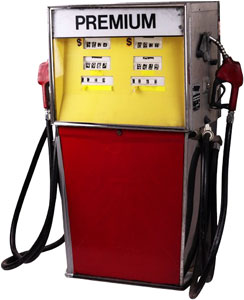
I stopped in to fill up with gas today. For the first time, I noticed the instructions on the pump...
"1. Remove Nozzle."
"2. Select Grade Above."
While the nozzle was to the right of the instructions, they certainly did not tell you to "Remove Nozzle To Right". However, they did mention that you needed to "Select Grade Above" in order to choose a quality of fuel from the buttons above the instructions.
Breaking down the language, is choosing to use the word "Above" an upselling technique? Is the gas station making a clever attempt to influence the selection of a more profitable product? Are unsuspecting consumers having their minds tinkered with by psycho-semantic subterfuge?
Is it a real technique? Is it effective?